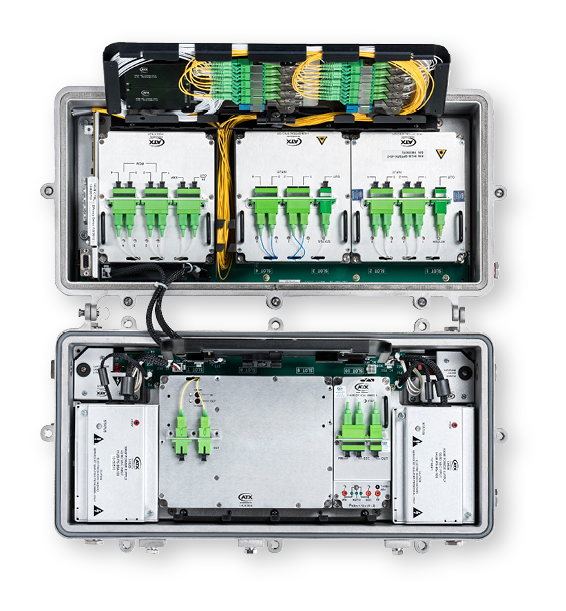I-HUB Chassis & Accessories
**DISCONTINUED**
ATX’s die cast aluminum housing provides a field-hardened platform, which enables operators to deploy many optical solutions that eliminate the need for costly, bricks and mortar hub sites and streetside pedestals.
The I-HUB platform has 2 load sharing power supplies with power entry ports on either end of the housing, 2 large fiber trays, a controller module, and has 10 application module slots (4 in the base and 6 in the lid). The I-HUB platform is an ideal tool to drive fiber deeper into the network while reclaiming existing fibers for additional revenue generating services, such as business services or cell site backhaul. ATX’s I-HUB optical switch supports redundant fiber routing applications.

